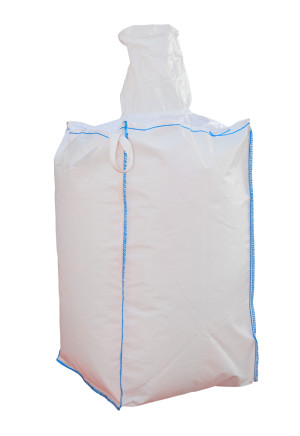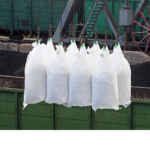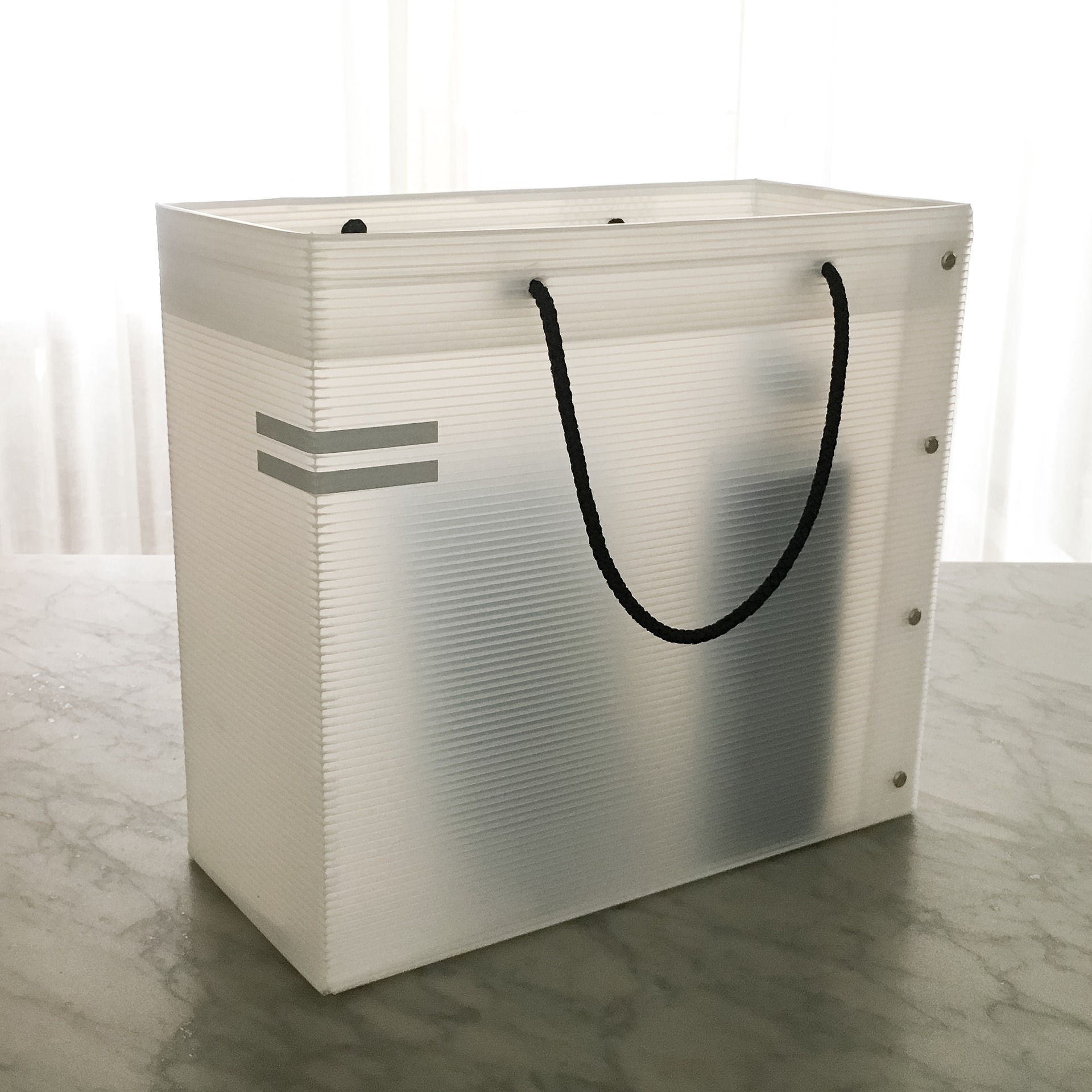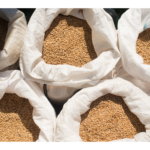Industries involved with shipping materials are always concerned with finding the best and most cost-effective ways to get their goods from origin to destination. A bulk bag is a great shipping container for companies that need to distribute dry, flow-able goods. Discover the history of bulk bags and how they are used today.
What is a bulk bag?
Flexible intermediate bulk containers (FIBCs), commonly known as bulk bags, are intermediate bulk containers that have bodies made of flexible fabric that must meet the following parameters:
– They cannot be handled manually when they are filled
– They are intended for shipment of solid material in powder, flake, or material form
– They do not require additional handling
– They are designed to be lifted from the top using integral, permanently attached devices (loops or straps)
The beginning uses of bulk bags
FIBCs have been in use for decades. The exact date of their first use is unclear, but it occurred somewhere between the late 1950s and early 1960s. These bags were mostly used in the United States, Europe, and Japan.
Construction
The original bulk bags were made from heavy-duty PVC-coated nylon or polyester. The cut sheets were welded together to create the bags. These bags also had lift swings that were integrated into the container or attached to a special pallet. The swing made it easier to load the bag from the top and empty it from the bottom.
Growth in the ‘70s
Despite its value, the use of bulk bags didn’t start to take off until the 1973 oil crisis. In Europe, bulk bags experienced a significant surge in use in the 1970s due to the oil crisis. Due to the crisis, the Middle Eastern countries that produced the oil needed a large amount of cement for their building programs.
They used bulk bags to transport the cement in 30,000-50,000 metric tons per week from Northern Europe, Spain, and Italy to the Middle East. Using FIBCs was the most cost-effective way to move the material, which led to their growing popularity over that period.
The demand for bulk containers in the United States
The demand for bulk bags grew slower in the United States than it did in Europe. However, in 1984 the demand started to grow rather quickly due to the U.S. Department of Transportation agreeing to grant exemptions for bulk bags to be used for the shipment of hazardous materials. This decision required the creation of performance standards for FIBCs that were established and issued by the Chemical Packaging Committee of the Packaging Institute.
Popular Features of FIBCs Today
FIBCs have several unique features that make them cost-effective and easy to handle and use, increasing their popularity over time and into today. First, they can be folded flat, which results in easier shipment to the user. When FIBCs are used for shipping via boat, they can be shipped as break bulk. They have a low package-to-product ratio, weighing only between five and seven pounds.
The cost of bulk bags is also quite competitive. Other types of packaging and pallets are not necessary when bulk bags are used. Further, they are easy to store and for warehouse workers to handle. And once they have outlived their usefulness, these bags are easily disposed of and recyclable, making them environmentally friendly.
Size
A standard-sized bulk bag varies based on the application. They are designed to fit two across in a truck or shipping container. However, they can be custom-made to fit the needs of the user. Manufacturers are able to change the height, diameter, and length. The length of the spout and treatment of the fabric of an FIBC can also be customized.
Shipping hazardous materials
High-quality, reliable bulk bags are essential for businesses that transport, haul, or store hazardous materials safely and securely. When a bulk bag is used for shipping hazardous materials, it must be marked with the UN mark that is associated with the product. The container must also be certified by a third-party lab in all countries except the United States, where that action is a suggested option.
Shipping of non-hazardous materials
Bulk bags containing non-hazardous materials that are to be exported must have a performance test and certification if the country of destination requires that it be done.
FIBC Bag Types And Uses
You can ensure you have the ideal solution for your business or requirement by being fully aware of the various FIBC bag types. The primary FIBC bag types are A, B, C, and D.
There is likely to be a buildup of static electricity during the filling and emptying of FIBCs. If you work with flammable and dangerous materials, preventing this electrical charge from accumulating is essential. Issues with flammability may not be a concern with other materials.
Type A
Plain-woven polypropylene and other non-conductive textiles are used to make Type A FIBCs. While being loaded or emptied, items move across or rub against the interior surface of the bulk bag, creating static electricity. The Type A FIBCs do not offer static protection.
Transporting non-flammable products and materials can be done securely using type A bulk bags. A Type A FIBC shouldn’t be exposed to or stored near flammable gases or liquids. Primary uses of Type A FIBCs include locations with non-hazardous conditions and storing or transporting non-hazardous materials.
Type B
Like Type A bulk bags, Type B bulk bags lack a static electricity dissipation mechanism. To avoid the development of extremely powerful and dangerous propagating brush discharges (PBD), Type B bulk bags are built from materials with a low breakdown voltage.
Despite being able to prevent PBD, Type B FIBCs cannot be categorized as antistatic FIBCs since they do not eliminate the electrostatic charge. Normal brush discharges can still happen and set flammable solvent vapors on fire. Type B FIBCs are primarily used to transport dry, flammable powders and in environments without flammable gases or solvents.
Type C
Type C FIBCs, often called conductive FIBCs or ground-able FIBCs, are constructed from non-conductive polypropylene textiles with conducting threads woven into them. These fabrics are typically sewn in a grid pattern. During filling and discharging, these conducting threads must be electrically linked to one another and a specific ground/earth.
Safely using Type C bulk bags depends on maintaining this connection to the ground/earth during filling and discharge. Type C FIBCs are typically used to transport flammable powders and environments with combustible dust, vapors, and gases.
Type D
Type D FIBCs are anti-static bulk bags composed of static protective fabric intended to safely prevent the occurrence of incendiary sparks, brush discharges, and spreading brush discharges without the requirement for a connection from the bulk bag to the ground or earth.
The inherent risk of grounding failure that exists anytime conductive Type C FIBCs (grounded FIBCs) are used is eliminated when making anti-static bulk bags out of CROHMIQ fabric. These bags are primarily used in environments where flammable dust, vapors, and gas are present and to transport combustible powders safely.
Why Should You Use Bulk Bags?
The need to use bulk bags continues to grow. Consider just a few of the leading reasons to use bulk bags.
– They have the lowest package to product ratio of any intermediate bulk container.
– They can be handled, transported and stored without pallets.
– When empty, they are lightweight and can fold flat.
– They can be customized.
– They have a wide range of uses, including chemical, mineral, food and agriculture.
– They are recyclable.
Common Uses of Bulk Bags
Many industries can benefit from bulk bags, including agriculture, food processing, construction, mining, and chemical. Some common uses of bulk bags today include the shipment of:
– Chemicals
– Fertilizers
– Fiberglass
– Food products
– Grains
– Construction materials
– Pigments
– Plastics
– Seeds
– Peanuts
– Starch
If you are a shipper in need of transporting and storing dry, flow-able goods, consider using bulk bags. They are strong and durable containers that have truly stood the test of time. If you are in need of bulk bags, contact Western Shipping to get the supplies you need for shipping and storing a wide variety of goods.
Thank you for reading our blog. How can we help you? Contact us today.





Sorry, the comment form is closed at this time.